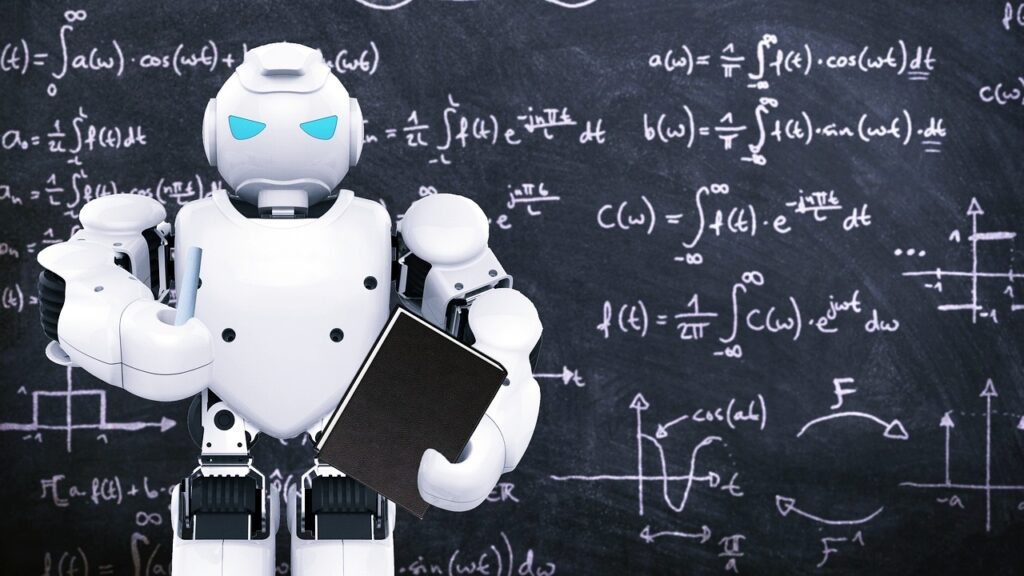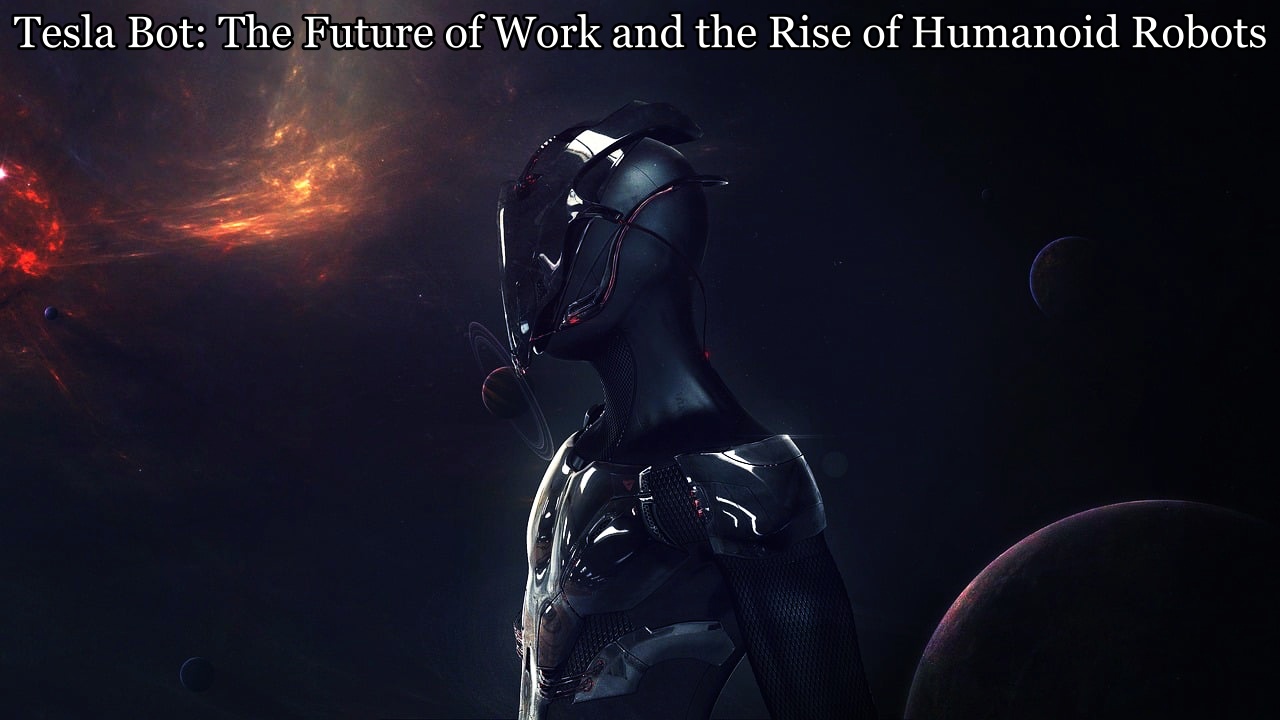In October 2024, Tesla made a bold move towards shaping a cyberpunk future during their Wii robot event. They unveiled the much-anticipated Tesla Bot, known as Optimus—a humanoid robot designed to assist in various industries. For years, science fiction has explored the idea of artificial beings existing alongside humans, and now Tesla is taking that vision to the real world.
This isn’t just about replacing labor with machines—Optimus is set to redefine the concept of work itself, blurring the lines between humans and robots. More human than human, as promised by the fictional Tyrell Corporation in Blade Runner, Tesla’s robots will be capable of much more than just mundane tasks.
The Tesla Bot: Revolutionizing Human Labor
Tesla’s Optimus Bot represents a significant leap in robotics. While traditional industrial robots have been designed for specific tasks, Optimus is a humanoid robot that can adapt and learn from its environment, just like Tesla’s Full Self-Driving (FSD) cars. This is a pivotal development, as Optimus is not confined to a single function—it is designed to learn and evolve.
Tesla’s long history of developing AI technologies makes this transition from car manufacturing to humanoid robots seem almost inevitable. Optimus will start by operating in Tesla’s factories, handling repetitive tasks like moving materials and sorting parts. However, the goal is for these robots to eventually serve in a wide array of industries, from manufacturing to healthcare.

A Glimpse into Tesla’s Vision of the Future
Elon Musk has always believed that Tesla is much more than just a car company. By 2025, he envisions 10,000 Optimus units deployed within Tesla’s own production lines. In 2026, Optimus will be sold to other companies, and by 2027, mass production will begin. Tesla plans to scale this technology to eventually produce millions, or even billions, of humanoid robots.
Tesla’s goal is not just to automate a few jobs but to replace entire industries with humanoid robots capable of doing everything from cleaning and building to providing care and performing complex tasks.
Tesla Bot’s Impact on the Workforce
The rise of humanoid robots like Optimus brings forth crucial questions about work and economic structures. If robots can perform tasks better, faster, and without the need for pay, what does that mean for human workers?
Optimus robots, costing under $20,000 to produce, will offer an affordable alternative to human workers. Initially, industries like manufacturing and logistics will be the first to adopt these robots, but the floodgates will soon open to other fields such as healthcare, retail, and even entertainment.
What Happens When Work Becomes Optional?
Optimus is not just another automation tool. Its ability to learn and adapt makes it different from traditional robots—it’s not just about automating a specific task but automating every task. The implications for the future of work are profound.
If humanoid robots like Optimus take over all aspects of labor, the fundamental structure of society will change. Traditional work has always been central to human survival, but in a world where robots can do everything, what is the role of humans? Will we transition into a utopian society where people are free to pursue creativity and innovation, or will it lead to the collapse of the workforce and the emergence of a two-tier society?
The Economic Shift: Who Owns the Robots?
As with any technological advancement, the central question surrounding Optimus is who will control the robots? Elon Musk has pointed out that the cost of manufacturing an Optimus robot will continue to decrease, making it increasingly affordable for businesses.
But the question remains: who will own these robots? The answer to this will shape the future of wealth distribution. If only a few corporations control the robots, the wealth generated by robot labor could be concentrated in the hands of the few, leading to growing economic inequality. In contrast, if robots are distributed equitably, society could experience an unprecedented period of abundance.
Tesla Bot and Universal Basic Income
As Optimus robots start replacing jobs, the need for Universal Basic Income (UBI) becomes more urgent. With no jobs left to fill, people will still need money to survive. UBI has been proposed as a solution, giving people a guaranteed income regardless of employment status.
This idea, though controversial, is gaining traction, especially in the context of automation and the rise of AI. In fact, Elon Musk and other tech visionaries have hinted that UBI might be necessary in a future where robots do the work and humans are free to explore new avenues.
The Road Ahead: A Society Without Work?
The rise of the Tesla Bot represents not just a leap in robotics but a potential transformation of society. If Optimus succeeds in automating human labor across the board, work as we know it may cease to exist. People will no longer need to sell their time for survival.
This is not the first time technology has disrupted the workforce, but it is the first time that humanoid robots might replace virtually every job, from healthcare providers to drivers, mechanics, and clerks.
Conclusion: The Changing Landscape of Labor
The arrival of Tesla Bot and the advancement of AI technology will challenge our traditional notions of work, society, and survival. As Optimus robots take over tasks once performed by humans, the questions we face will grow ever more pressing: What is the future of human labor? Who controls the robots? And perhaps most importantly, how do we adapt to a world where work is no longer a necessity?
While the future remains uncertain, Tesla’s Optimus Bot marks the beginning of a new chapter—one where humanoid robots could help shape a world of abundance or lead to a more divided society. The road ahead is still being paved, and only time will reveal whether we’re headed toward a utopian future or a technological dystopia.
FAQ
The Tesla Bot, also known as Optimus, is a humanoid robot designed by Tesla to perform a variety of tasks that humans typically do, including repetitive and monotonous work in factories. It is built with AI capabilities that allow it to learn and adapt to its environment.
The Tesla Bot learns by observing its environment and gaining real-world experience, much like Tesla’s Full Self-Driving (FSD) cars. It adapts, improves, and shares its knowledge with other robots in the fleet, making it smarter over time.
Initially, Optimus will be deployed in Tesla’s factories to perform repetitive tasks like moving materials and sorting parts. Over time, its applications will expand into other industries such as healthcare, retail, and logistics.
The production cost of Optimus is expected to drop below $20,000 per unit. However, the selling price will be determined by the market once it becomes widely available, potentially making it an affordable alternative to human labor.
With the introduction of Optimus, many jobs that involve repetitive tasks or manual labor may be replaced by robots. Industries like manufacturing, healthcare, and retail could see significant changes in the labor market as robots take on these tasks.
As Optimus robots begin replacing human workers, the need for Universal Basic Income (UBI) could become more pressing. UBI would ensure people can meet their basic needs even if there are fewer jobs available, addressing the economic challenges of widespread automation.
If Optimus robots are adopted on a massive scale, they could lead to a future where work is no longer tied to survival. This could either lead to a utopian society where people are free to pursue creativity and innovation or to a society of economic inequality where only a few corporations control the robots and the workforce.
Read More:


3 thoughts on “Tesla Bot: The Future of Work and the Rise of Humanoid Robots”